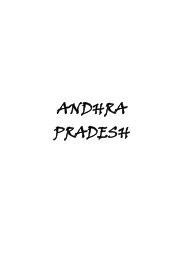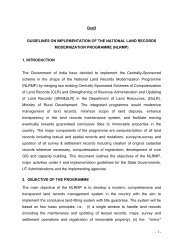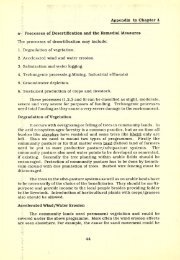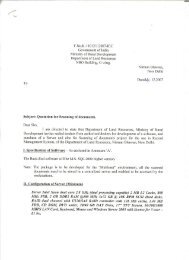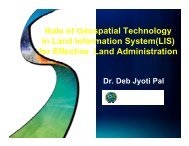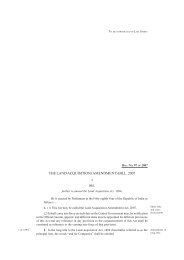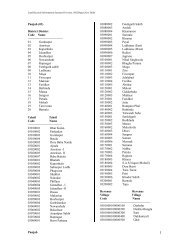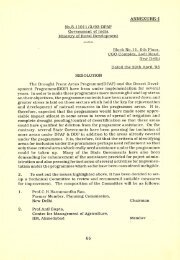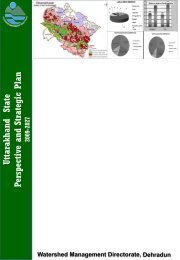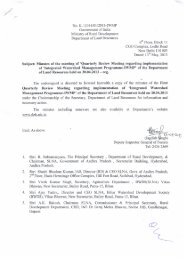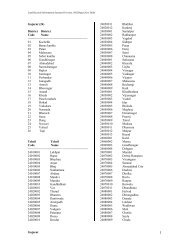Success Stories -NL -Final - Department of Land Resources
Success Stories -NL -Final - Department of Land Resources
Success Stories -NL -Final - Department of Land Resources
You also want an ePaper? Increase the reach of your titles
YUMPU automatically turns print PDFs into web optimized ePapers that Google loves.
H.1. Reaping Rich Dividends through Watershed<br />
Programme<br />
A Case Study from Kohima, Nagaland<br />
Problem Statement<br />
Tseminyu sub-division <strong>of</strong> Kohima district with a total geographical area <strong>of</strong> about 284.36 sq.<br />
km occupies the northern part <strong>of</strong> Kohima. Under IWDP<br />
Kohima-V (Tseminyu sub-division) watershed, 16<br />
villages were covered with a treatment area <strong>of</strong> 8200<br />
ha. The villages are Sendenyu, Henbeju, Terogunyu,<br />
Phenwhenyu, Kashanyu, Zisunyu, Tseminyu Village,<br />
Phenshunyu, Khenyu, Ziphenyu, Tesophenyu New,<br />
Nsunyu, Chunlikha, Gukhanyu, K.Nyishunyu, and<br />
Tsonsa. The project was sanctioned during 2003 and<br />
completed in March 2008 and it has benefited a total <strong>of</strong><br />
3,303 households. Agriculture is the mainstay <strong>of</strong> the<br />
people here and vast area practices jhum cultivation.<br />
The socio-economic status <strong>of</strong> the people is very low<br />
due to lack <strong>of</strong> resources and economic opportunity<br />
which leads to migration to urban areas. Large scale<br />
jhumming is practiced leading to excess soil erosion<br />
and degradation <strong>of</strong> natural flora and fauna. To add to<br />
the woes there is acute shortage <strong>of</strong> water for drinking<br />
and farming activities.<br />
Objectives and Methodology<br />
Taking into consideration the above situation efforts were initiated through the project to<br />
uplift the socio-economic status <strong>of</strong> the villagers which would result in reduction <strong>of</strong> migration,<br />
to recharge the ground water in the project area and change the pattern <strong>of</strong> cultivation from<br />
shifting to permanent cultivation. Overall it was expected that these initiatives would restore<br />
the ecological balance and bring about environmental improvement.<br />
The project was implemented mainly<br />
to reclaim the vast jhum land which<br />
lay barren, for afforestation,<br />
horticulture, and cash crop cultivation<br />
and incorporate it with various soil and<br />
moisture conservation measures,<br />
thereby providing subsistence to the<br />
farmers. The IWDP, which<br />
emphasizes on bottom up planning<br />
approach, was well accepted by the<br />
local people. All the activities were<br />
tailored to suit local conditions and<br />
that easily fitted into the jhum system.<br />
The major activities undertaken were:<br />
Photo 1. Map indicating the project<br />
area (Tseminyu sub-division) in Kohima<br />
District<br />
Photo 1. A view <strong>of</strong> the project area devastated by Jhum<br />
before the Project<br />
afforestation, horticulture, cash crop cultivation, soil and moisture conservation measures<br />
like bench terraces, contour bunds and water harvesting structures, formation <strong>of</strong> SHGs.<br />
106




